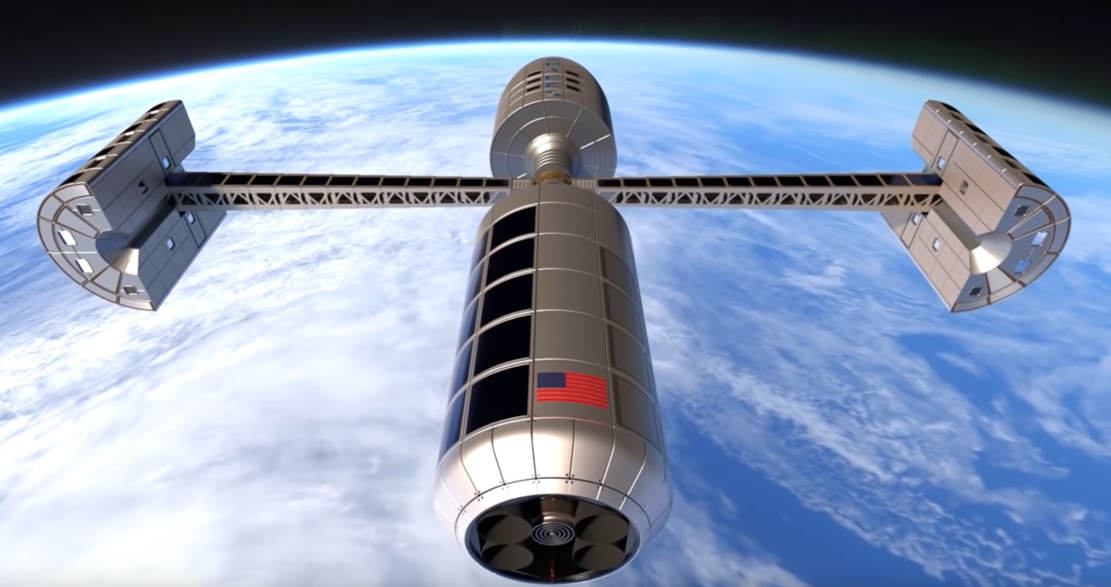Visit the space station?
We are the space station...
We are the space station...
You can install our site as a web app on your iOS device by utilizing the Add to Home Screen feature in Safari. Please see this thread for more details on this.
Note: This feature may not be available in some browsers.
That certainly wouldn't be NASA's first time down that road. Around 1980 they did a study about turning Space Shuttle external tanks into a space station. Nothing came of it, of course.Visit the space station?
We are the space station...
And Skylab was basically a converted Atlas V second stage, and that did actually launch back in the early 70's...That certainly wouldn't be NASA's first time down that road. Around 1980 they did a study about turning Space Shuttle external tanks into a space station. Nothing came of it, of course.
It seems like an obvious thing to do.Visit the space station?
We are the space station...
Except that a Starship isn't ever a station. ISS is a station because it lacks propulsion. Starship is a spaceship. If it wants to loiter in orbit for months on end, that's fine, but it is a mobile vehicle. I agree that there's no need for reentry capabilities because, again, it's a spaceship. It goes to places in space. LEO, geostationary orbit, lagrange points, the Moon, wherever. I would just hope that it's not like "mobile homes", where it promises mobility but nobody ever goes anywhere in it.A Starship Station would cost a small fraction of that, I would guess. $5 billion? 10?
Sure, that makes sense, assuming that in-orbit refueling is available (and of course we know that SpaceX plans to achieve that capability, sense it is critical for Starship operations beyond LEO).Except that a Starship isn't ever a station. ISS is a station because it lacks propulsion. Starship is a spaceship. If it wants to loiter in orbit for months on end, that's fine, but it is a mobile vehicle.
Great idea! Perhaps the first docking modules could be sized so that they fit in an F9 fairing. They might just have two ports. Later “cube” modules could have up to 6 ports, as you described, and be placed in LEO using a Starship variant with the “clamshell” cargo door that SpaceX has shown in renders. Though at that point the precise maneuvering required to dock/undock so close to other ships would be tricky if the ships had extended solar panel arrays.If there is a stationary component to all this, it could be a docking module that allows multiple Starships to join with each other. It has no abilities of its own; it just facilitates joining the Starships together. Take a cube and allow a Starship to dock on each face. Such a module would sit in orbit perpetually, boosted as needed by a Starship. Any two Starships should be able to dock tip to tip, but the cube would allow up to 6 Starships at the same time. Make it large enough and you can get many more docked to it
Not convinced it would be a good idea to do prop transfers through the nose of Starship right next to the passageway for crew.It might even facilitate propellant transfers.
Skylab was a actually a Saturn V S-IVB third stage.And Skylab was basically a converted Atlas V second stage, and that did actually launch back in the early 70's...
Skylab was made from a converted S-IVB which was used as a Atlas V third stage or IB second stage.And Skylab was basically a converted Atlas V second stage, and that did actually launch back in the early 70's...
Now I'll correct myself. Although it did fly on a Saturn V first and second stage, Skylab was a 200 Series S-IVB that was intended to fly on a Saturn IB.Skylab was a actually a Saturn V S-IVB third stage.
The Chinese space station, Tiangong, has such a ”hub” central docking module. See this recently released videoIf there is a stationary component to all this, it could be a docking module that allows multiple Starships to join with each other.
Thanks to you and @mongo for extra detail on this... I had remembered it being a repurposed rocket stage, but think I typed Atlas when I was thinking Saturn.Now I'll correct myself. Although it did fly on a Saturn V first and second stage, Skylab was a 200 Series S-IVB that was intended to fly on a Saturn IB.
The Backup Skylab B is a 500 series that was built for a Saturn V stack. It's the one on display at the National Air and Space Museum.




